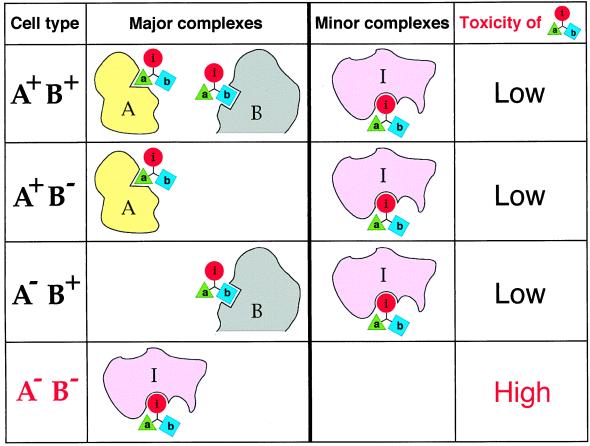Figure 2.
Multitarget selectivity of a compound that utilizes interference/codominance. This diagram tabulates the relative toxicities of the compound abi for cells that either lack or contain macromolecular targets A and B. The i moiety of the compound abi (see the legend to Fig. 1) inhibits an essential enzyme I. The interaction i-I is mutually exclusive with the interaction a-A and the interaction b-B, the macromolecules A and B being negative targets of abi. It is assumed that concentrations of the targets A and B in cells that contain at least one of them significantly exceed the concentration of I (see the main text). In A+ B+, A+ B−, and A− B+ cells, the enzyme I would be at most partially inhibited by the i moiety of abi, because of the competing interactions of abi with A and/or B. By contrast, in A− B− cells, the bulk of abi molecules would be available for interaction with I, resulting in the selective toxicity of abi to these cells. The selectivity pattern of abi requires that certain pharmacokinetic conditions are met as well (see the main text). Note that the physiological effects and the uses of abi-type compounds are not confined to cytotoxic regimens.

